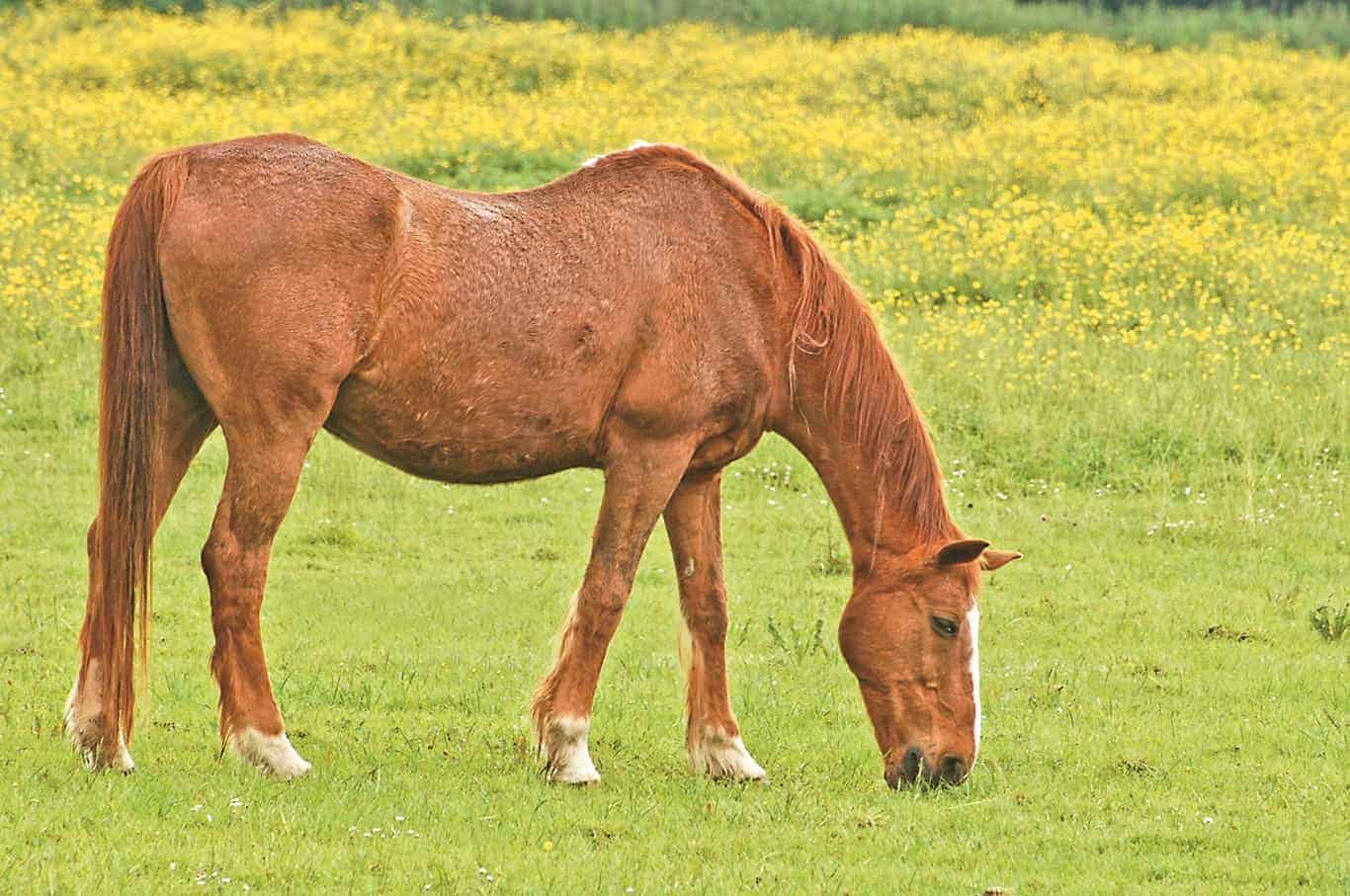Dealing With Rain Rot in Horses

This time of year many horse owners are dealing with wet weather, long (or shedding) hair coats, and dirt. Nothing loves this type of environment more than Dermatophilus congolensis, a Gram-positive bacterium that causes a skin infection commonly known as rain rot or rain scald. D. congolensis is commonly believed to live in the soil and has been found on the skin of animals and people. It can spread through contaminated equipment (i.e., brushes, blankets, and shared tack) and biting insects.
Any horse can get rain rot, but horses with compromised immune systems from systemic disease or malnutrition are most likely to be affected. Key environmental factors also must be in place for the bacteria to establish an infection.
Moisture is the main factor in rain rot development. While the disease is termed rain rot, it’s not just the rain that can cause the infection. Horses in the summer heat on stall rest can become infected and show clinical signs—no precipitation required. And in early spring many horses still have long coats and the hot/cold weather fluctuations can lead to more moisture on the skin. Excess moisture compromises the natural barrier the outer layer of the skin (epidermis) provides, making it susceptible to bacterial invasion TheHorse.com is home to thousands of free articles about horse health care. In order to access some of our exclusive free content, you must be signed into TheHorse.com. Already have an account?Create a free account with TheHorse.com to view this content.
Start your free account today!
and continue reading.
Written by:
Heather Farmer, DVM
Related Articles
Stay on top of the most recent Horse Health news with















